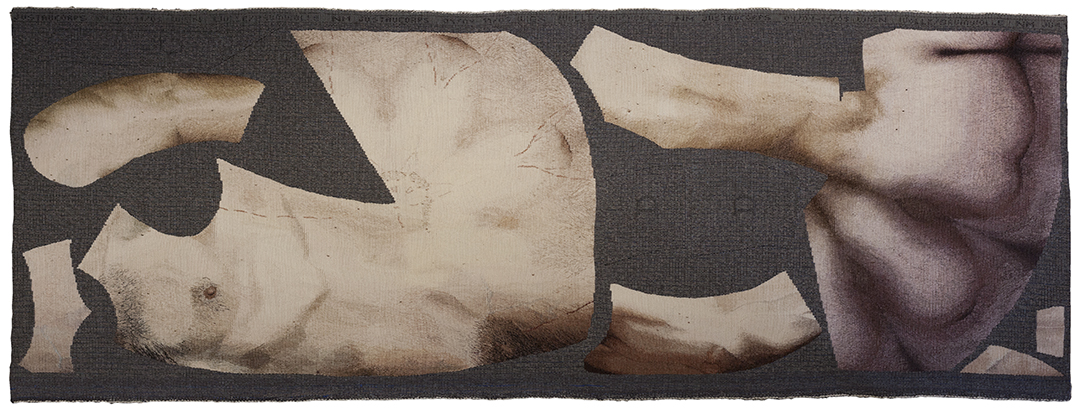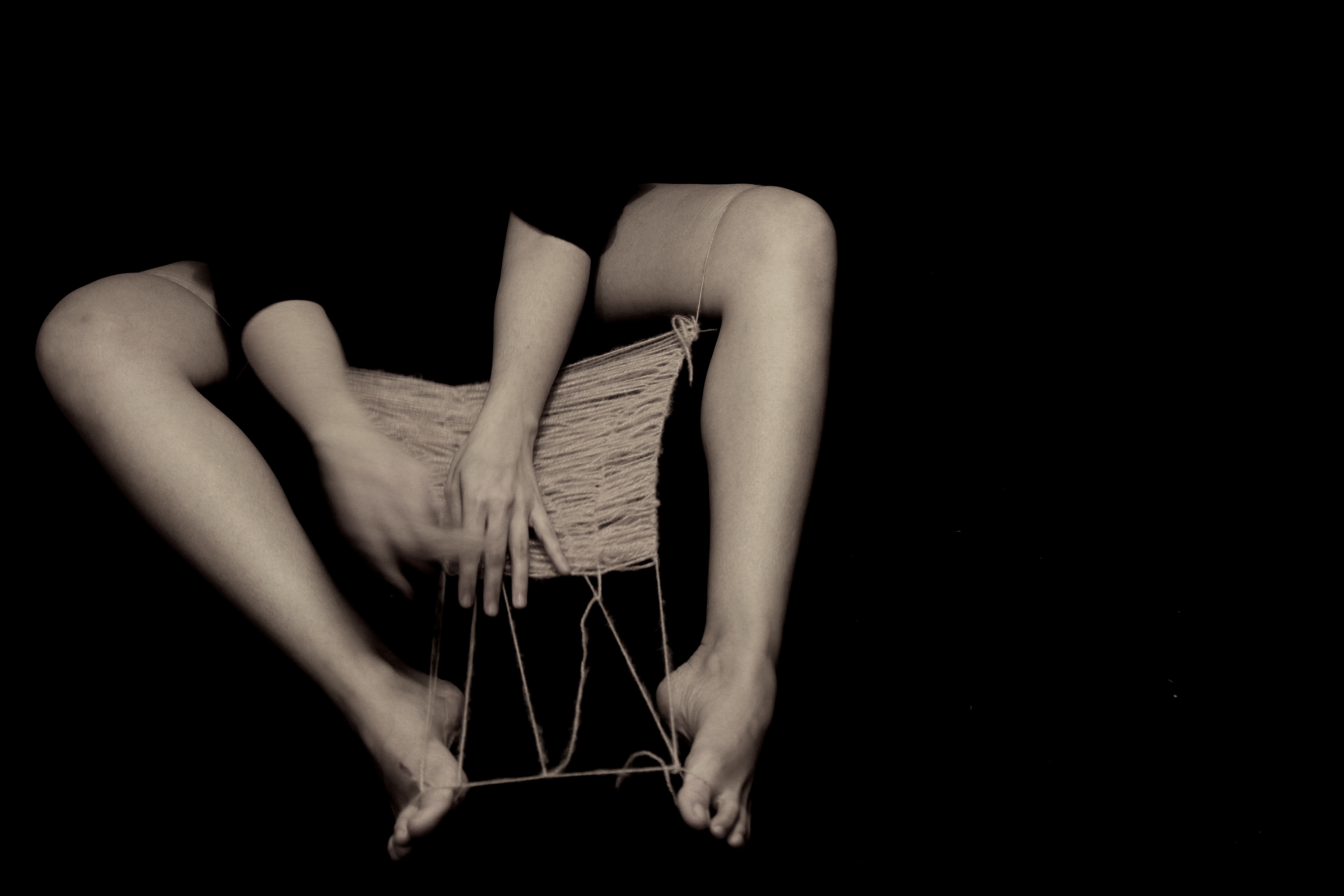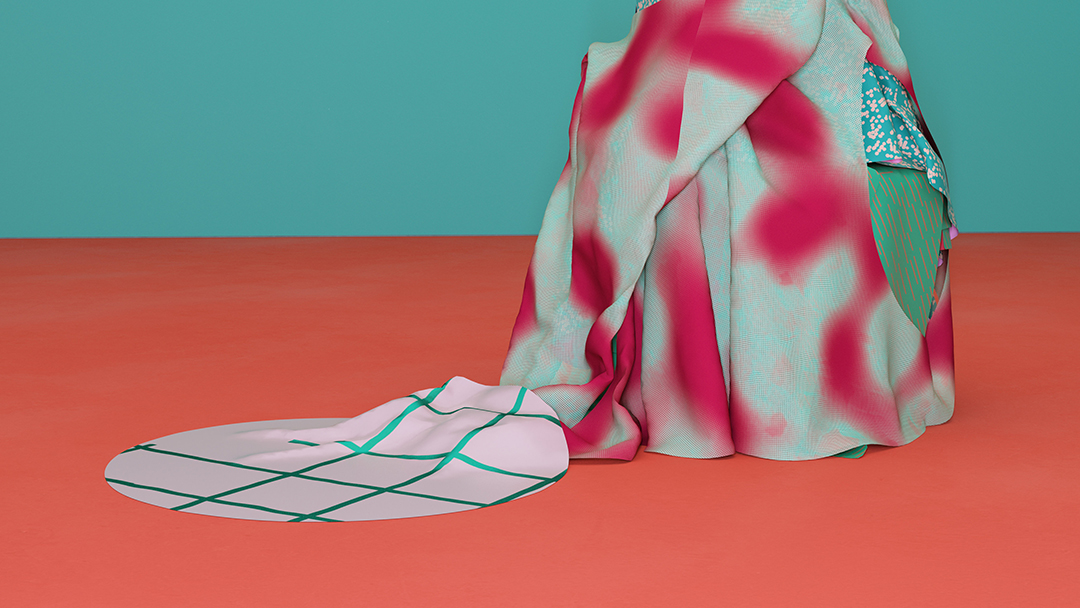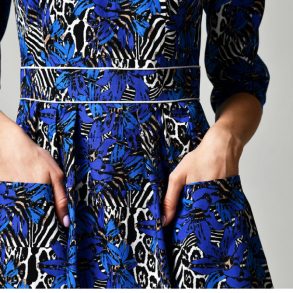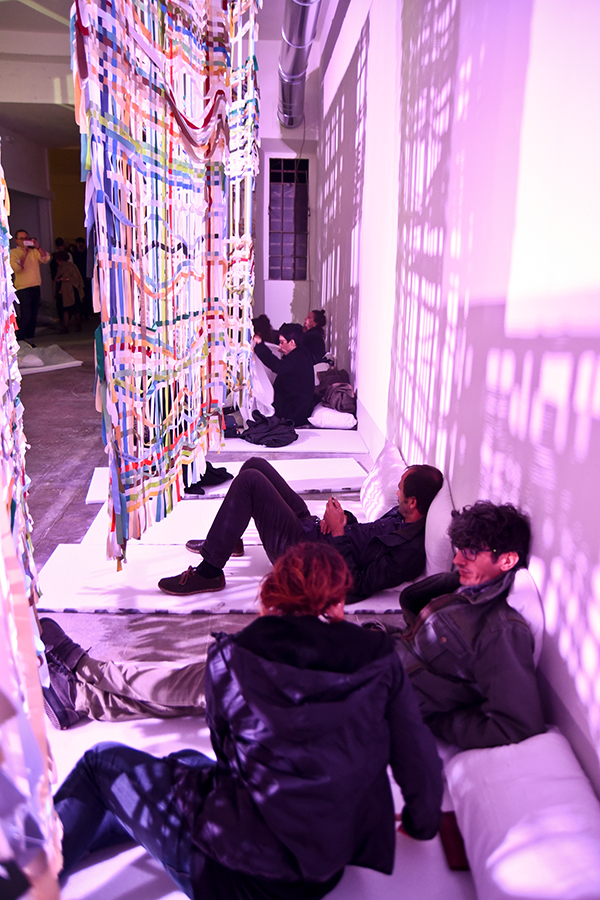
Inside Lottozero is an international exhibition currently taking place at Lottozero / textile laboratories — “a center for textile design, art and exchange with an open lab for textile production, experimentation and research — based in a refurbished old warehouse in Prato, Italy.”
The exhibition (the first for the newly launched Lottozero) “explores the use of textile material in contemporary art through the works of 13 Italian and European artists,” encompassing a wide range of artistic disciplines including “painting, sculpture, costume, tapestry photography, video, performance and sound.”
The concept for Inside Lottozero is based on an idea of “non-stop fruition”, a concept that was realized in the opening of the exhibition on October 15th; the event lasted 12 hours, until early morning, and “the visitors were given the possibility of spending the opening night inside the exhibition space, surrounded by the displayed pieces, and therefore to establish a long-term contact with the work.” One of these pieces was an installation created by Arianna Moroder which served the function of “a resting place for the night, during which a sleep concert took place. 6 experimental electronic musicians accompanied the audience in its sleep with gentle musical performances.” Through this participation the installation was “dismembered by humans during the night, and simultaneously through this action, it attained its final shape.”
Mariana Sales
Lottozero founders and sisters Tessa and Arianna Moroder describe the purpose of the exhibition “to initiate a dialogue, to find meaningful connections between the textile material and other art forms. The versatile work of the artists is a collection of perspectives in which one can see the past and the future directions of this kind of art, they materialize in crossing of languages, research, materiality and reflections on the various ways to interact with the textile material.
It’s a flexible and pliable material, not only for its rich history of weaving and sewing techniques that have developed over the centuries in every country of the world, but also for its many anthropological, social, political and religious values.”


